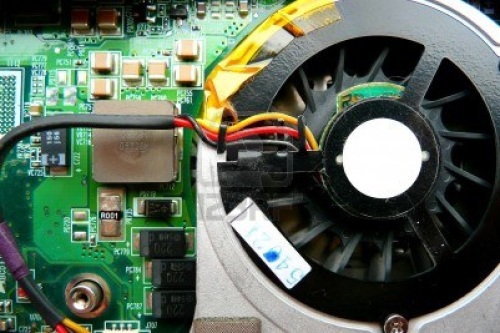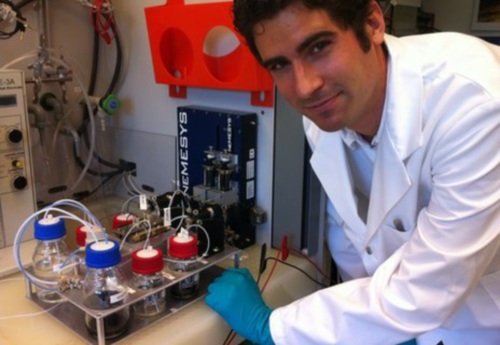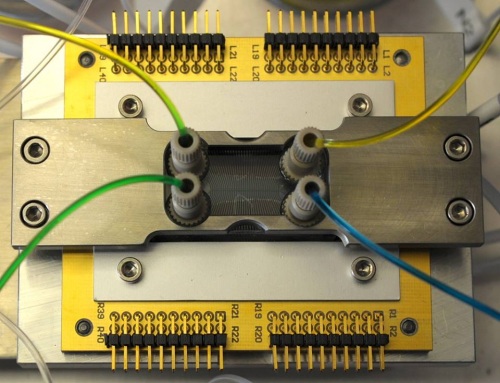Anyone with a basic understanding on how computers work knows that the more powerful the device’s chips get, the hotter they run. When this happens, the computer needs to use even more energy to power a fan and cool the computer down so as to keep from frying its interior electronic components.

IBM’s Patrcik Ruch and Bruno Michel are working on a way to kill this cycle, and their answer is a fluid-based solution that would not only cool down the computer’s components, but deliver energy to its various parts as well. The two researchers have created a proof-of-concept computer chip that contains within it tiny channels that circulate fluid past electronic components, cooling them down. They theorize that if this fluid were to include an electrolyte similar to that which is found in a battery, the fluid could be used to not only dissipate heat, but deliver energy to the chips too.

Dr Patrick Ruch with IBM's test kit .

A close-up of IBM's test kit.
The successful development of this technology would eventually allow researchers to pack more processing power into smaller spaces. It would also allow them to fatten up flat computer chips into block-like structures. This can’t be done with present-day technology because chips rely on circulating air in order to stay cool; piling processors atop one another limits this function, and would trap too much heat.
Incorporating “electronic blood” into computers would also turn out to be a major cost-saver. Companies today spend thousands, if not millions of dollars on air conditioning units to keep their data centers cool.

There’s still a long way to go for Ruch and Michels, though: a proper electrolyte still needs to be chosen, and a chip with the channels as described still needs to be fabricated. Both remain optimistic that the prospects for the technology they’re working on looks promising.
Story via: bbc.co.uk
Advertisement
Learn more about Electronic Products Magazine





